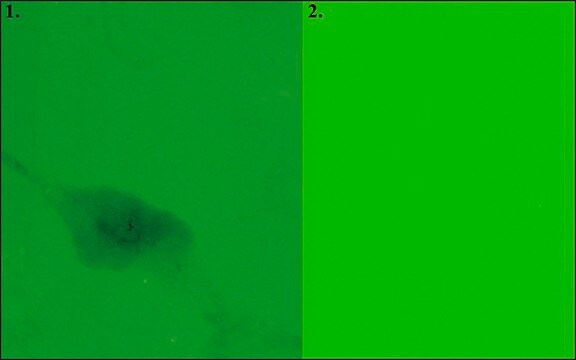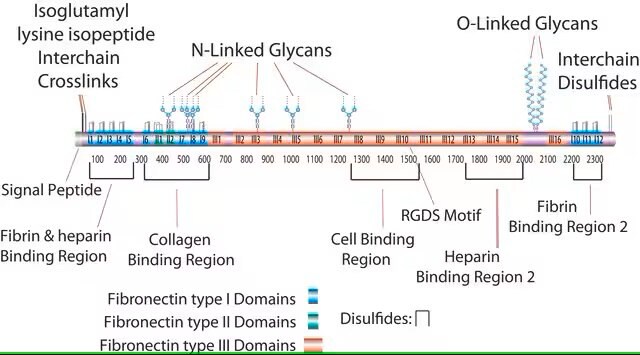F3008
Anti-Mouse IgG (whole molecule)–FITC antibody produced in sheep
affinity isolated antibody, buffered aqueous solution
Autenticatiper visualizzare i prezzi riservati alla tua organizzazione & contrattuali
About This Item
Prodotti consigliati
Origine biologica
sheep
Coniugato
FITC conjugate
Forma dell’anticorpo
affinity isolated antibody
Tipo di anticorpo
secondary antibodies
Clone
polyclonal
Stato
buffered aqueous solution
tecniche
direct immunofluorescence: 1:32
Temperatura di conservazione
2-8°C
modifica post-traduzionali bersaglio
unmodified
Cerchi prodotti simili? Visita Guida al confronto tra prodotti
Descrizione generale
Immunoglobulin G (IgG) is available in large quantities in the human serum. It constitutes about 10-20% of the plasma proteins. IgG is a glycoprotein, with 82-96% proteins and 4-18% carbohydrates. It consists of four sub-classes i.e IgG1, IgG2, IgG3, and IgG4. IgG is composed of four polypeptide chains-two heavy chains (γ chains) and two light chains (κ or λ chains) which are linked by inter-chain disulfide bonds.
Applicazioni
Anti-Mouse IgG (whole molecule)−FITC antibody produced in sheep has been used in:
- flow cytometry
- immunocytochemistry
- immunofluorescent staining
Azioni biochim/fisiol
IgG antibody subtype is the most abundant of serum immunoglobulins of the immune system. It is secreted by B cells and is found in blood and extracellular fluids and provides protection from infections caused by bacteria, fungi and viruses. Maternal IgG is transferred to fetus through the placenta that is vital for immune defense of the neonate against infections. The coupling of FITC to Anti- Mouse IgG (whole molecule) antibody allows for the visualization of protein by fluorescent microscopy.
Altre note
Antibody adsorbed with human serum proteins.
Stato fisico
Solution in 0.01 M phosphate buffered saline, pH 7.4, containing 1% bovine serum albumin and 15 mM sodium azide.
Esclusione di responsabilità
Unless otherwise stated in our catalog or other company documentation accompanying the product(s), our products are intended for research use only and are not to be used for any other purpose, which includes but is not limited to, unauthorized commercial uses, in vitro diagnostic uses, ex vivo or in vivo therapeutic uses or any type of consumption or application to humans or animals.
Non trovi il prodotto giusto?
Prova il nostro Motore di ricerca dei prodotti.
Codice della classe di stoccaggio
10 - Combustible liquids
Classe di pericolosità dell'acqua (WGK)
WGK 2
Punto d’infiammabilità (°F)
Not applicable
Punto d’infiammabilità (°C)
Not applicable
Scegli una delle versioni più recenti:
Possiedi già questo prodotto?
I documenti relativi ai prodotti acquistati recentemente sono disponibili nell’Archivio dei documenti.
David Russell et al.
Journal of cell science, 117(Pt 22), 5233-5243 (2004-09-30)
The outer epidermal layer of the skin is an epithelium with remarkable protective barrier functions, which is subject to pronounced physical stress in its day-to-day function. A major candidate component for absorbing this stress is the K5/K14 keratin intermediate filament
M C C Sachweh et al.
Cell death & disease, 4, e533-e533 (2013-03-09)
Nutlin-3 selectively activates p53 by inhibiting the interaction of this tumor suppressor with its negative regulator murine double minute 2 (mdm2), while trichostatin A (TSA) is one of the most potent histone deacetylase (HDAC) inhibitors currently available. As both Nutlin-3
Possibility of mixed progenitor cells in sea star arm regeneration.
Hernroth, B., et al.
The Journal of Experimental Zoology, 314, 457-468 (2010)
Katsushi Suzuki et al.
PloS one, 15(8), e0236781-e0236781 (2020-08-11)
It has been reported that Bach1-deficient mice show reduced tissue injuries in diverse disease models due to increased expression of heme oxygenase-1 (HO-1)that possesses an antioxidant function. In contrast, we found that Bach1 deficiency in mice exacerbated skeletal muscle injury
J Bedard et al.
Antimicrobial agents and chemotherapy, 44(4), 929-937 (2000-03-18)
A series of 1,6-naphthyridine (L. Chan, H. Jin, T. Stefanac, J. F. Lavallee, G. Falardeau, W. Wang, J. Bedard, S. May, and L. Yuen, J. Med. Chem. 42:3023-3025, 1999) and isoquinoline (L. Chan, H. Jin, T. Stefanac, W. Wang, J.
Il team dei nostri ricercatori vanta grande esperienza in tutte le aree della ricerca quali Life Science, scienza dei materiali, sintesi chimica, cromatografia, discipline analitiche, ecc..
Contatta l'Assistenza Tecnica.








